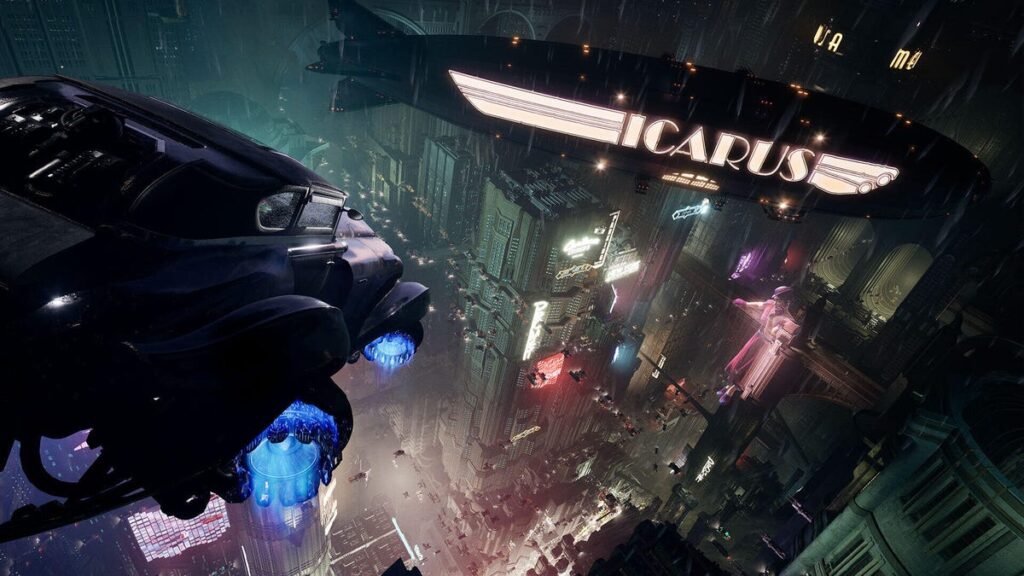The story of Nobody Wants to Die opens with our main character James and his wife Rachel watching a black-and-white film in a drive-through theater. Amid the pouring rain, you pass this serene moment teasing her with conversation starters, but it is short-lived. When Rachel disappears, the film pans out to reveal James’s dismal, hellish 24th-century home. Everything you need to know about this eerie cyberpunk detective noir is presented in a terrific setup. Even if the setting is well-known, Critical Hit Games’ creators have added amusing details and a few unexpected moments. Sadly, Nobody Wants to Die’s solid beginning falls flat throughout its almost six-hour running length; crucial elements that would have made the branching story structure easier to follow are absent, and there is a little too much handholding during the investigative sequences. However, its style more than makes up for any polish it may lack.
You have undoubtedly seen the story Nobody Wants to Die before: James is a detective in a city full of flying automobiles, enormous holographic advertisements, and skyscraper buildings so tall you can not see the ground. He drowns himself in alcohol to ease the sorrow of his tragic past. His resolve and his detective abilities are tested when he is drawn into a case that turns out to be more complex than he could have ever imagined and becomes entangled in a conspiracy. On paper, it appears to be simple, if not plain boring. And there are times when it does adhere to the plot a little too closely.
But this is no ordinary detective story—rather, it is a cyberpunk neo-noir that freely acknowledges its literary and creative inspirations. Its premise bears a lot of similarities to Altered Carbon, particularly in regards to the idea of post-death body swapping (or just anytime at all). The stunning, svelte style is strikingly similar to Blade Runner, but instead of a Japanese parody, it has a 1950s Dark City feel. It is also easy to recognize parts of Cyberpunk 2077 in this picture, both in terms of its core cyberpunk components and in the way technobabble-powered devices can be used to rebuild crime scenes.Of course, there is also the detective noir of the early 20th century, complete with femme fatales, nonstop rain, copious amounts of alcohol, and monologues from James that veer just on the edge of being overly dramatic but not quite. It is a wet, greasy pulp.
The motto of Critical Hit Games is “Eat the rich” and it shows. It seems that the body-swapping mechanism makes immortality possible, but when you reach adulthood, you have to pay for a subscription. If the price is too high, you will end up in jail and have your mind placed in “bank” storage; if the price is too low, you can always buy new bodies and swap them out whenever you like. Unfortunately, the class conflict that this idea so alluringly suggests is mostly a plot device. Instead of explaining the reasons behind this discrepancy and offering a more nuanced analysis, it is more of a chance to call the wealthy “assholes.”
Although many of its components were lifted from other sources, the developers added a great deal of original detail. Although body swapping has been depicted in cyberpunk literature previously, I do not believe I have ever seen a system that explicitly lists the drawbacks of receiving a body that was formerly drug-addicted or allergic. I adore how James has to call for a communal toilet to use because his apartment complex is such a shithole, which results in a hilarious conversation with a neighbor who was still taking a shower.
Other aesthetic features defy logic, such as the fact that many locks need you to use a rotary dial to enter a code consisting of numbers. Why do we not see more people using computers in the twenty-fourth century? How can James locate a drive-in cinema showing black and white films from almost 400 years ago? It is straightforward to accept these strange details because they add to the captivating ambiance, and it is evident that Critical Hit Games is enjoying itself immensely while creating new combinations of anachronisms.
Verdict
The comparatively short plot of Nobody Wants to Die is not entirely original, but it does have a great blend of world-building elements and inspirations that come together to make something fresh and interesting. For a game about the art of investigation, there is a little too much handholding, but its chat system makes up for it with humor, unexpected turns of events, and an unexpectedly profound tale about how your past may affect your present, even in the face of immortality.
